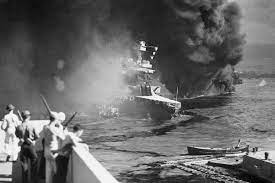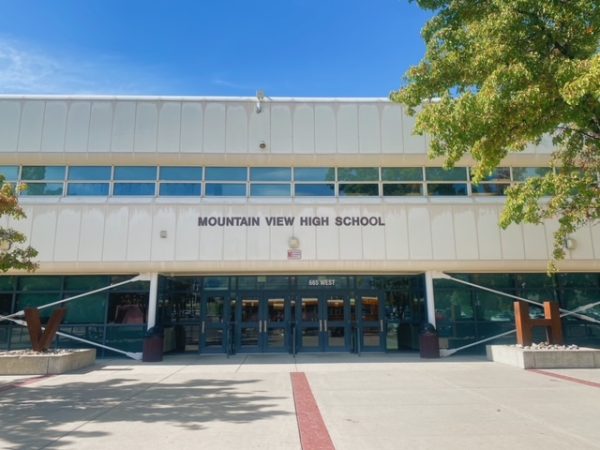World War II

The 80th anniversary of Pearl Harbor just passed on December 7, and that means there’s no better time to study and learn about Pearl Harbor and World War ll, and also why it’s important to do so. The generation of veterans that served and lived during that time is passing away, and with that, our living knowledge and memories. That’s why it’s important for us to remember, everybody needs to have knowledge of this great war, to pass it on to our future generations. Because if we don’t, then we’ll lose this precious knowledge and it affects us both positively and negatively.
World War ll or the Second World War, was a global war that lasted from 1939-1945. It involved the vast majority of the world’s countries, including all of the great powers which eventually formed two military alliances. These two alliances were the Allies (The United States, Great Britain, and the Soviet Union) and the Axis (Germany, Italy, and Japan). Rising to power in an economically and politically unstable Germany, Adolf Hitler, leader of the Nazi Party, got the nation back on its feet and signed treaties with Italy and Japan to further his ambitions for world domination. Hitler’s invasion on Poland in September 1939 drove Britain and France to declare war on Germany, therefore marking the beginning of World War ll. Over the next six years, the war would take more lives and destroy more land and property around the world than any previous war. Among the 45-60 million people killed were 6 million Jews murdered in Nazi concentration camps as a part of Hitler’s satanic “Final Solution” now known as the Holocaust.
Leading up to World War ll
The devastation of the Great War, also known as World War l, greatly destabilized Europe, and many of the reasons for the start of World War ll grew out of issues left from that earlier conflict. In particular, political and economic instability in Germany fueled Adof Hitler to rise to power. After becoming Chancellor of Germany and anointing himself Fuhrer (supreme leader) in 1934, he wanted to expand his living space. Obsessed with the idea of the superiority of the “pure” German race or “Aryan” as he called it, he believed war was the only way to gain that necessary living space, for the German race to expand. Hitler then sent troops to occupy Austria in 1938 and Czechoslovakia in 1939. His open aggression went unchecked due to the fact that the U.S. and the Soviet Union were both focused on their own politics at the time. France nor Great Britain wanted to intrude on Hitler’s plan for the reason that they were both devastated by World War l.
Outbreak of World War ll
On September 1, 1939, Adold Hitler invaded Poland from the west; two days later, Great Britain and France declared war on Germany, beginning World War ll. On April 9, 1940, Germany simultaneously invaded Norway and conquered Denmark. On May 10, German forces swept through Belgium and the Netherlands, this became known as “blitzkrieg” or lightning war. Italy’s fascist dictator Benito Mussolini formed an alliance with Hitler, and Italy declared war against France and Britain on June 10. German forces invaded Paris on June 14, dividing France into two zones, one under the German military and the other under Marshal Petain’s government. Hitler then turned his attention to Britain. To pave the way for an invasion, German planes bombed Britain beginning in September 1940 until May 1941. The Royal Air Force eventually defeated the German Air Force, postponing Hitler’s plan to invade. With Great Britain’s defensive resources pushed to the limit, Prime Minister Winston Churchill started receiving crucial aid from the United States.
World War ll in the Pacific (Pearl Harbor)
Pearl Harbor is a U.S. naval base near Honolulu, Hawaii. That was the scene of a catastrophic surprise attack by Japanese forces on December 7, 1941. Just before 8 a.m. that morning, hundreds of Japanese fighter planes descended on the base, where they destroyed and damaged nearly 20 American naval vessels, including eight battleships and over 300 planes. More than 2,400 Americans died during the attack, and another 1,000 were wounded. The day after the assault, President Franklin D. Roosevelt and the U.S. Congress declared war on Japan.
After a long string of Japanese victories, the U.S. Pacific Fleet won the Battle of Midway, this proved to be a turning point in the war. In mid-1943, Allied naval forces began an aggressive counterattack on Japan. This involved a series of amphibious assaults on key Japanese held islands in the Pacific. This strategy was called “island hopping” and it proved successful, and allied forces moved closer to their ultimate goal of invading Japan’s mainland.
Headed Toward Ally Victory in World War ll
By 1943, British and American forces had defeated Italy and Germany in North Africa, this led to the Allied invasion of Sicily and Italy. Mussolini’s government fell in July 1943, though the Allied fighting against the Germans in Italy would continue until 1945. On June 6, 1944, also known as D-Day, Allied forces began a massive invasion on Europe, landing 156,000 British, Canadian and American soldiers on the beaches of Normandy, France. In reply, Adolf Hitler poured all the remaining strength of his army into Western Europe, causing total defeat for Germany in the east. Soviet troops then advanced into Poland, Czechoslovakia, Romania and Hungary, all while Hitler gathered his forces to drive the British and Americans back from Germany. This last attempt to stop the Allies was called the Battle of the Bulge (December 1944-January 1945). An intensive aerial bombardment in February 1945 preceded the Allied land invasion of Germany. By the time Germany surrendered on May 8, Soviet forces had occupied most of the country. Hitler was already dead, having commit suicide on April 30 in his Berlin Bunker.
The End of World War ll
Roosevelt died in April resulting in Harry S. Truman taking office. The Ally forces discussed the ongoing war with Japan along with a peace settlement with Germany. Churchill and Truman asked for help from Stalin (Governor of the Soviet Union) as they needed Soviet help in the ongoing war against Japan. Heavy casualties for both the Allies and Japan during the battles of Iwo Jima and Okinawa led Truman to allow the use of a new devastating weapon. The atomic bomb was unleashed on the Japanese cities of Hiroshima and Nagasaki in early August. On August 15, the Japanese government officially declared they would surrender, and on September 2, U.S. General Douglas MacArthur accepted Japan’s surrender, officially ending World War ll.





Owen Mullen • Feb 2, 2022 at 10:59 AM
It’s really sad to see the history of our world and the wort part about is tht some counties deny things that they have done in their history and mke it so none of their people won’t even get search results about it there amybe things I don’t know about americas history about it because of this anf the problems about this is that then we can’t learn from our countries mistakes